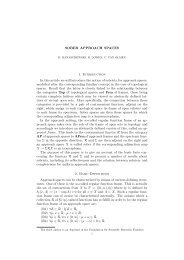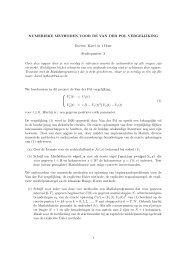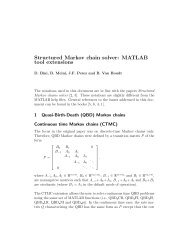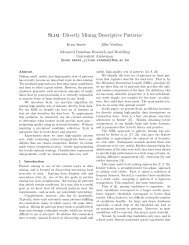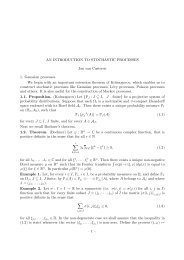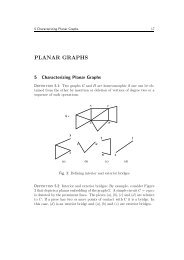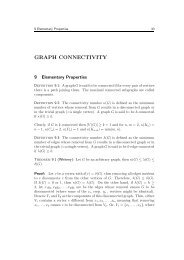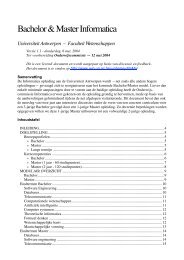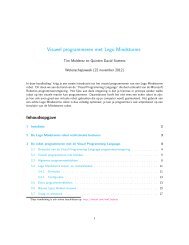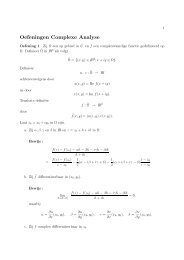Practical Rational Interpolation of Exact and Inexact Data Theory ...
Practical Rational Interpolation of Exact and Inexact Data Theory ...
Practical Rational Interpolation of Exact and Inexact Data Theory ...
Create successful ePaper yourself
Turn your PDF publications into a flip-book with our unique Google optimized e-Paper software.
8.2. <strong>Rational</strong> interpolation <strong>of</strong> uncertainty intervals 101<br />
<strong>and</strong> the irreducible form <strong>of</strong> the generalized rational function (p/q)(t1,t2) by<br />
rℓ,m(t1,t2). Let<br />
Rℓ,m(Sn) = {rℓ,m(t1,t2) | rℓ,m(t (i)<br />
1 ,t(i) 2<br />
) ∈ Fi,q(t (i)<br />
1 ,t(i) 2<br />
) > 0,i = 0,... ,n}.<br />
(8.7)<br />
So the rational frequency response providing the data is denoted by<br />
H(e it(i)<br />
1 ,e it(i)<br />
2 ) = A<br />
B (eit(i) 1 ,e it(i)<br />
2 )<br />
<strong>and</strong> its rational approximant is denoted by<br />
rℓ,m(t1,t2) = p<br />
q (t1,t2).<br />
Whereas in traditional rational interpolation one has ℓ + m = n, here we<br />
envisage ℓ + m ≪ n just as in least squares approximation. For given<br />
segments Sn <strong>and</strong> given sets N <strong>and</strong> D <strong>of</strong> respective cardinality ℓ + 1 <strong>and</strong><br />
m + 1, we are concerned with the problem <strong>of</strong> determining whether<br />
The interpolation conditions<br />
in (8.7) amount to<br />
Rℓ,m(Sn) = ∅.<br />
rℓ,m(t (i)<br />
1 ,t(i)<br />
2 ) ∈ Fi, i = 0,... ,n (8.8)<br />
f ≤<br />
i p(t(i) 1 ,t(i) 2 )<br />
q(t (i)<br />
1 ,t(i)<br />
2 ) ≤ f i, i = 0,... ,n.<br />
Under the assumption that q(t (i)<br />
1 ,t(i) 2 ) > 0 for i = 0,... ,n, we obtain the<br />
following homogeneous system <strong>of</strong> linear inequalities after linearization<br />
−p(t (i)<br />
1 ,t(i)<br />
2 ) + f iq(t (i)<br />
1 ,t(i) 2<br />
p(t (i)<br />
1 ,t(i) 2 ) − f i q(t(i) 1 ,t(i) 2<br />
) ≥ 0<br />
) ≥ 0 , i = 0,... ,n. (8.9)<br />
As explained in Chapter 6, there is no loss <strong>of</strong> generality in assuming that<br />
q(t1,t2) is positive in the interpolation points: the interpolation conditions<br />
(6.7) can be linearized for arbitrary non-zero q(t (i)<br />
1 ,t(i) 2 ), positive or negative,<br />
without changing the nature <strong>of</strong> the problem.



